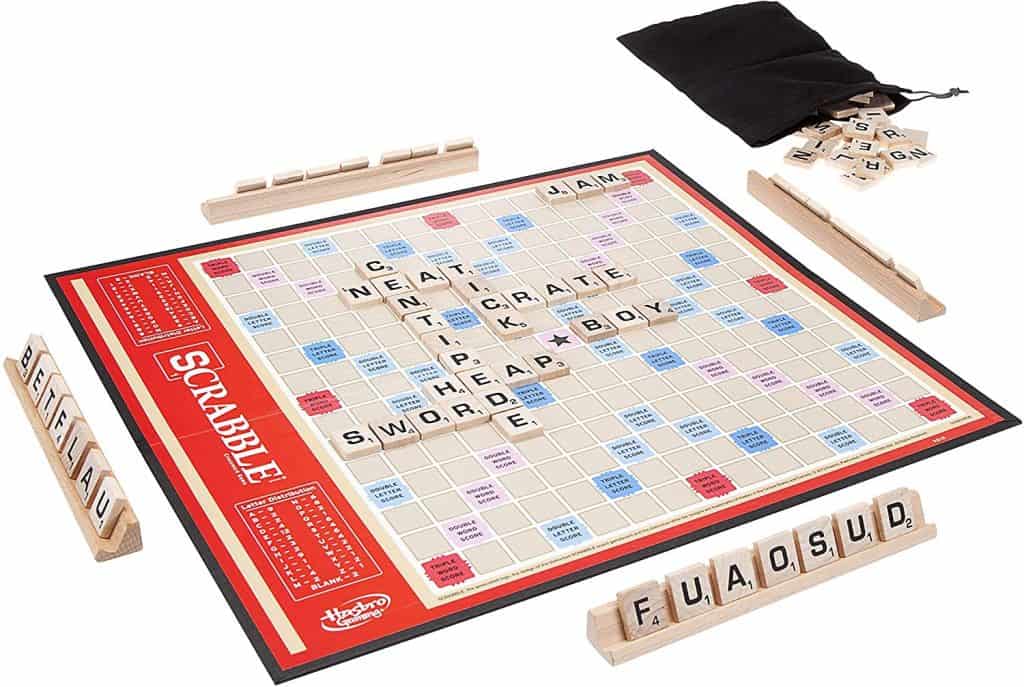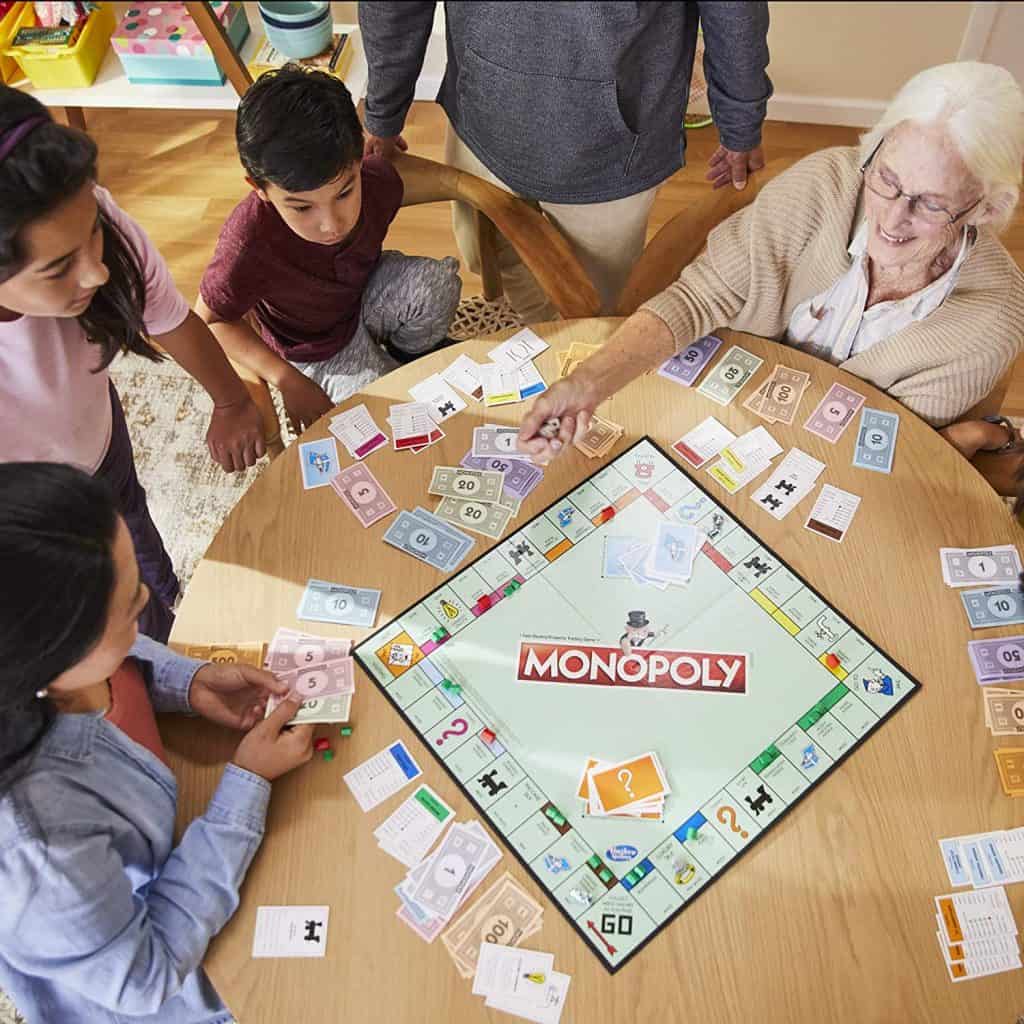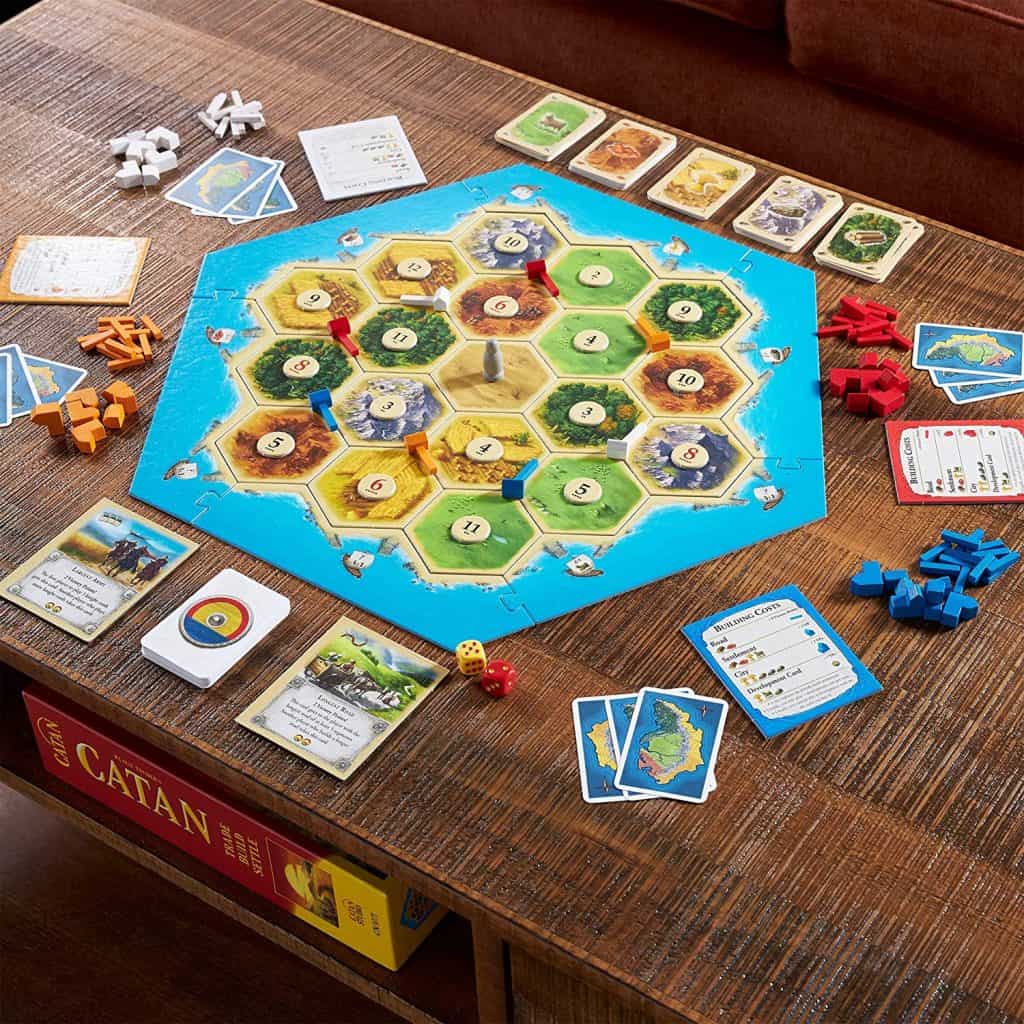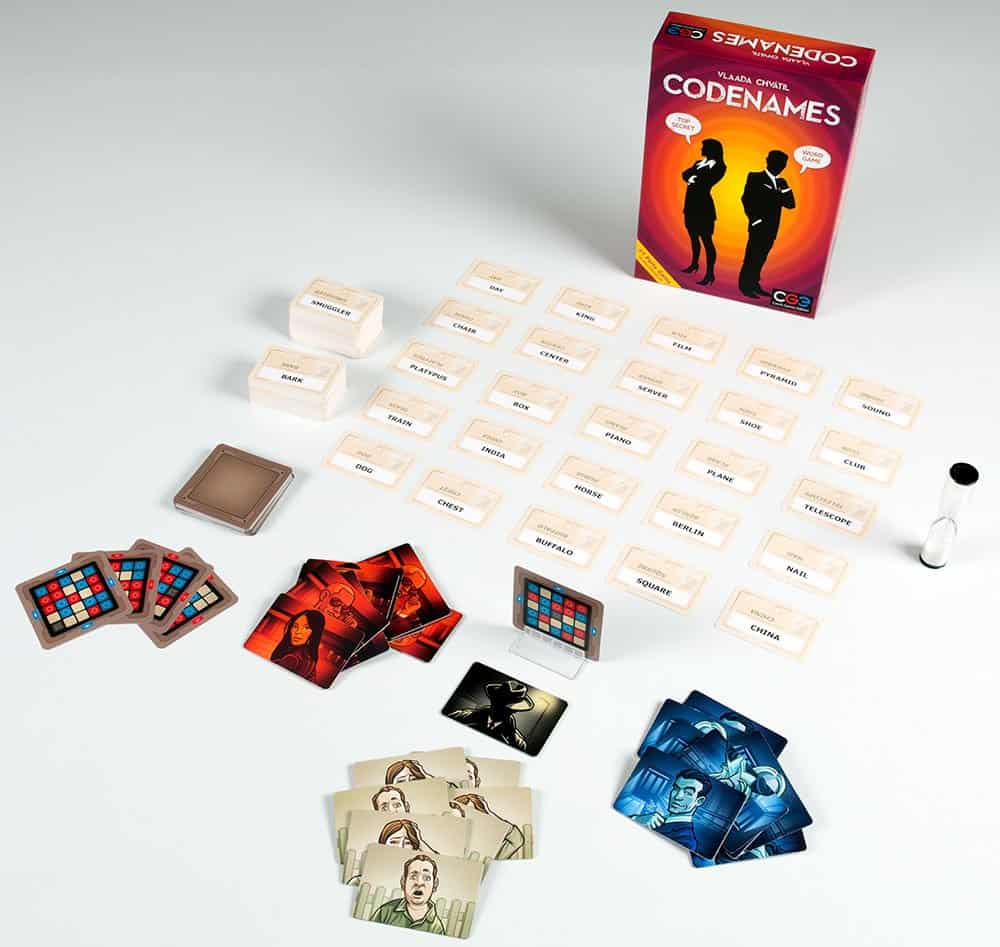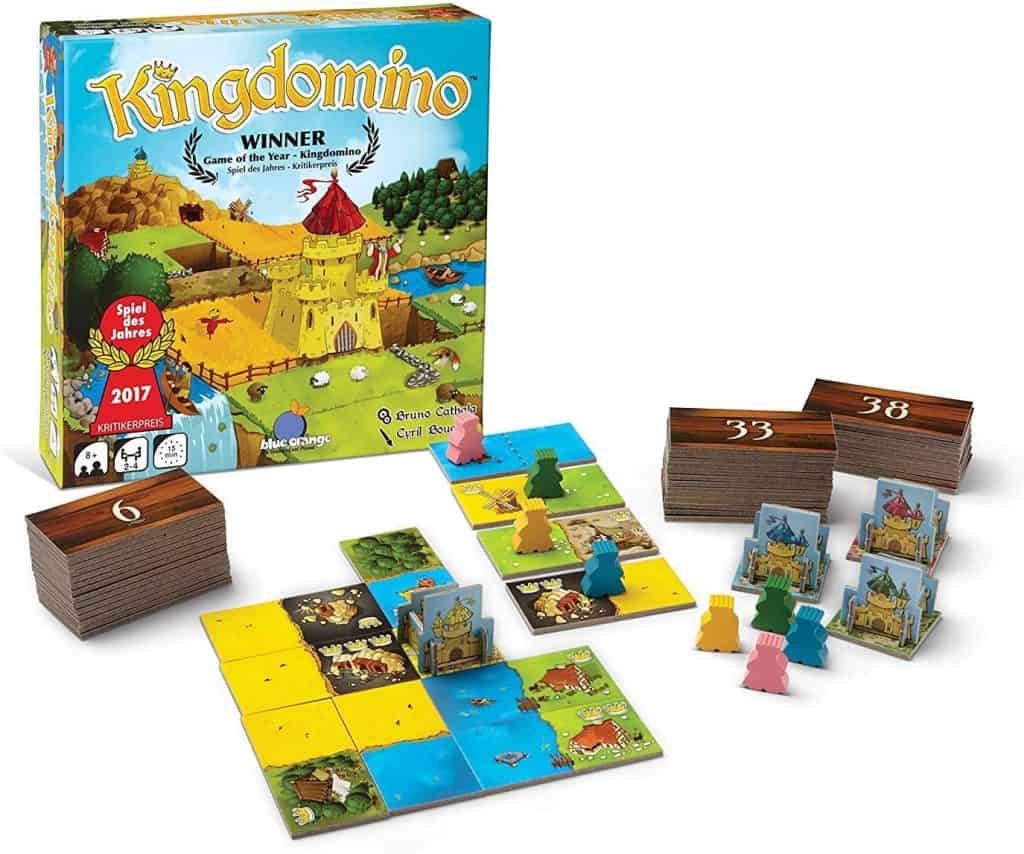Disclosure: This post contains affiliate links, which means I may receive commissions for purchases made through links in this post, at no cost to you. Please read my disclosure for more info.
Our Top 3 Picks for the Best 3-Player Board Games
2nd choice
Best overall
3rd choice
Family game nights have made a resurgence recently, understandably because COVID has left us racking our brains for things to do during lockdown. But even without a pandemic forcing us to find novel ways to entertain ourselves, playing board games together gives families an opportunity to focus on a common objective and discuss topics they might not otherwise think of. Game time can also improve certain cognitive skills, social skills, and reduce stress. It’s a great opportunity to gather your family together when we’re all usually so busy and focused on our individual activities and schedules.
For many families though, typical 4-player board games don’t work well. It can be tough to choose games that play as well when there are only three members in your family as many games are specifically designed for smaller or larger groups.
But don’t worry! There’re plenty of games out there that 3 players can enjoy, and some that are even made specifically for this number of players. No matter which type of game your family prefers, you’ll surely find several to play in our picks for the best 3-player board games. You might even be inspired to expand your horizons too.
Best 3-Player Board Games: Classic Family Games
1. Scrabble
This is perhaps the most classic of the classic board games. Scrabble was created in 1948 and has sold over 150 million copies worldwide! It’s a simple game that features all the letters of the alphabet printed on small wooden (or plastic) tiles.
Players have a collection of seven tiles that they must create words with, words that are placed upon the game board in a crossword-style manner. Every word you add onto the board must intersect with at least one pre-existing word. Each letter tile is worth points and there are various spaces on the board that are worth extra points, depending on which letters are placed upon it. If you can spell, you can play this game.
Its simplicity is part of Scrabble’s appeal, and people ages 10 to 100 have enjoyed playing it for decades. There are junior versions available too if you want to enjoy a game with younger players. It’s perfect for 2 players but can be played with up to 4 people.
The box says that gameplay can last up to an hour, but many a Scrabble game has lasted longer than that! It really depends on how competitive the players are, and the ages of the players. If you’re playing with your 90-year-old grandmother, it may take a bit longer than with your 25-year-old cousin. As a general rule though, budget at least an hour to finish a game.
2. Spot It
This is an easy, mess-free game that the whole family can enjoy together. Spot It consists of a stack of round cards that feature eight different symbols on each. Every two cards have exactly one symbol in common, so the point of the game is to spot the similarity between two cards. Once this is spotted, the winner keeps the first card. Another card is then revealed, the similarity found, etc.
Whoever collects the most cards once the deck runs out (55 cards in total) is the winner. And this is just the basic game. There are other games you can play with the cards too and the guidelines for these are laid out in the rulebook.
Spot It is a great game for younger players and is officially recommended for ages 7 and up. However, many users say that it’s perfectly suitable for kids ages 4 and up. There are many versions of this game available, such as a Halloween version, an MLB version, a hipster version, and even some Disney versions (like Frozen). Also, something to note, Spot It is sometimes marketed as Dobble, but it’s the exact same thing.
3. Sorry!
Sorry! is another family favorite board game with the standard board to travel around, classic pawn-style game pieces, dice, and emotion-inducing surprises. It’s called “The Classic Game of Sweet Revenge” for a reason!
On their turn, each player draws a card and follows the instructions. They might be instructed to go forward a certain number, to change places with an opponent, or even to switch with an opponent and send them back to the Start space. There’s a “Slide” feature where, as long as the slide isn’t the same color as your game piece, you can move five spaces ahead, knocking all tokens along the slide (including your own) back to their Start spaces.
Alternatively, instead of each player drawing a card on their turn, players can start with five cards in their hand and they must choose which is the best to use on each turn. It’s an extremely satisfying game for anyone looking for a little friendly payback!
Created back in 1929, Sorry! can be played by 2-4 players, ages 6 and up. Each game takes approximately 30mins and is therefore a great game to play even on a weeknight. The concept is simple enough so kids can play independently or with adults.
4. Trouble
Similar to Sorry!, Trouble is a game where players make their way around the board but must beware of their opponents sneaking up on them and sending them back to the start. Each player has six pawns of a specific color and each of those six pawns must make it around and back “home” again as quickly as possible.
It’s not easy! It’s a simple concept though that even small children can grasp, making it a favorite for family game nights. The bubble-style dice popper set into the middle of the game board is also a family favorite — for kids because the popping sound and action are fun, for parents because it means the die never gets lost!
Trouble has been enjoyed by families since 1965, gathering 2-4 players for a game that lasts about 45mins each time. Kids ages 4 and up can learn to play and can enjoy the game independently or with adults if they so choose. For play with more than 4 people, simply set up two games right next to each other and continue taking turns.
5. Monopoly
Of course, Monopoly makes this list! As a classic game that’s been beloved since 1933, it’s a rite of passage for families to enjoy this game together. The purpose of the game is to collect as many properties and make as much money as possible. This is achieved by rolling the dice and then either buying the property you land on or paying rent to its current owner.
Properties are color-coded into groups of three and if you own all three then the rent goes up. You can also purchase “houses” or “hotels” to put on each property, increasing the rent even more. Players who are forced to pay out more rent than they take in will go broke. The last player standing will have a good pile of money and is crowned the winner.
Part of the reason why this is a great game for families is that it can be played with 2-6 players, according to the box. Users say though that you can play with up to 8 people if you use your own tokens, but it’s best with just 3 or 4. Kids as young as 8 can play, and for younger enthusiasts, there are junior versions available. If you’re a pop culture fan of any sort, there are a gazillion special editions to suit your fancy, including Lord of the Rings, Star Wars, Pixar, Black Panther and more.
It can take a long time to finish the game though. Monopoly lovers say it can take anywhere from one to 2½ hours.
6. Sequence
Perhaps the only one of its kind, Sequence is both a card game and a board game. The game board looks like you’ve laid out two 52-card decks, minus the Jacks, with the four corners as free spaces. There are actual playing cards too and these are dealt out at the beginning of the game. The number of cards dealt changes with how many players are participating. Using the cards in your hand and matching them with the cards on the game board, you can choose where best to lay your game tokens. For 3 players, the goal is to be the first to make one “Sequence”, which consists of five tokens in a row.
It’s a simple game to learn, so play can take anywhere from 10-30mins. Although the box recommends itself for players ages 7 and up, you may find that younger children can grasp the concept and play too. Players can also work as teams, so there can be anywhere from 2-12 players at once.
Best 3-Player Board Games: Strategy Games
7. Agricola
This one is a farm-building game. Each player has a board in front of them and they start with open farmland and two farmhouses. There is also a main board, and players take turns placing their meeples (playing pieces) on the action spaces. Once completed, these action cards can result in the accumulation of resources. Resources can help you upgrade your farm with things like fences, stables, plowing fields, collections of grains and veggies, building rooms into your house, and upgrading your house to clay or stone.
Eventually, the game moves to the “harvest time” phase and you have to feed your meeples, harvest your vegetables, and breed your animals. The more developed your farm is and the more people you have, the more points you receive at the end of the game.
The game has 6 stages that are broken into 14 rounds, so it can take a while to play. The box says it takes 2 hours to play, but it can sometimes take even longer than that. Budget at least 2 hours for a good game of 1-5 players (yes, it can be played solo) of ages 12 and up.
8. Dominion
Dominion is technically a card game, and it’s a deck-building game, which means you collect different cards that give you various types of power and money. Collecting several of certain cards means they can be traded for others, which then gives you more power and money.
Unlike many deck-building games (or any board games, for that matter), the rules for setup and play can be different each time. There are certain types of cards that get set out to start each game, and if you change these up (as the rule book will guide you to do), it can be a completely different experience every time you play!
2-4 players can play, ages 13 and up recommended, and it’s perfectly fine with just 3 participants. Although the box says that gameplay takes about 30mins, realistically it’s about 45mins for 2 players, and even longer with every additional player.
Dominion is also our top pick for the best deck-building games!
9. Carcassonne
Easy to learn and easy to play, Carcassonne is a sort of map building game. There is a stack of tiles and each player takes turns laying the tiles to create a map with roads, cities, cloisters, farms, and a river.
Each player’s turn means laying a tile and possibly laying a meeple (playing piece) on that tile. The placement of the meeples can result in immediate points, possible points for later in the game or points to be scored when the game is finished. There are plenty of expansions available for Carcassonne, adding different types of piles and meeples for an even more challenging game!
Carcassonne is recommended for ages 7 and up. 2-5 people can play, and the more who play, the longer the game can take. The box says each game takes 30-45mins, but it’s more likely going to take 3 players about an hour to play. Again, it’ll likely take longer to play when you’re first learning.
10. Splendor
In Splendor, players collect jewels and cards in an effort to earn the most “prestige points” and be the richest one at the table. On each turn, you can collect jewels, buy or build (use) a card, or reserve a card. Reserving cards allows you to buy them later, and buying cards gives you more jewels to add to your stash of actual jewels. There is a finite number of jewels in each color though, so things can get pretty tricky when other players already have the colored jewels you need!
This game takes about 30mins to play. Although your first game might take a bit longer than that, it’s an easy game to master, so subsequent games will go much more quickly. It’s recommended for players who are age 10 or older, and 2-4 players can play together.
11. Ticket to Ride
The Ticket to Ride game has a board that lays out a beautiful map of the USA. The goal is to travel and complete the longest railway routes across North America. Some routes are worth more points than others but having more routes in your belt is helpful too. The problem is, everyone else is trying to claim routes too and they may be using parts of the track that you need! Extra points can be earned by having the longest route across the board or collecting special cards.
There are dozens of other city, country and continent editions too if you want to venture beyond the USA.
It’s not difficult to learn or play. 2-5 players can enjoy a game together, probably ages 8 and older. Gameplay can take anywhere from 30-60mins of strategic, engaging fun, depending on your comfort level with the game and how many people are participating.
12. Wingspan
This game is absolutely beautiful. Every detail has been lovingly designed and is evident in the gorgeous colors, detailed artwork, and convenient storage. Wingspan is a card-driven game with a bird-watching theme. Each card features an individual bird with its unique nesting, eating, and egg-laying details. These cards are collected and laid on the board in front of each player, paid for with food tokens acquired from the adorable birdhouse. Points are accumulated after each round, and four rounds ends the game.
There are a lot of details involved in playing this game. It takes a while to learn and longer to master. The box says that gameplay lasts for 40-70mins, and you’ll want to plan for at least 70mins, especially if you or your competitors are new to the game. Anyone aged 10 and up can play this game, and 1-5 people can play together. Yes, you can even play this as a single player.
13. Settlers of Catan
Sometimes called the new Monopoly game for families, Settlers (as fans call it) has become a modern classic. This is a resource-collecting game where players collect, trade, and play resource cards in order to build on and expand across the game board, which is made up of several hexagon-shaped tiles that represent forests, fields, pastures, mountains, and hills. By building roads, settlements, and cities, plus acquiring the occasional Development Card, players accumulate Victory Points. The game is over as soon as someone reaches 10 Victory Points.
This game is meant for 3-4 players, but you can also buy expansions so it can be played with 5-6 players. It can take anywhere from 1-2 hours to play, depending on how many people are participating and how familiar they are with the game. The box says that it’s aimed at players ages 10 and up, but your younger kids may be able to play too, at your discretion.
14. Smash Up
This is a “shufflebuilding” game, unlike any deck-building game you may have played before! There really isn’t any heavy planning or strategizing to this game though.
You begin by choosing two of the eight available factions to create a crazy hybrid of characters like zombie-dinosaurs, ninja-aliens, or wizard-robots. There are two types of cards players have in hand: minions, who are sent out to conquer bases, and actions, which may be used once or multiple times, depending on the card. Each player has five cards in hand and on their turn can play one of each type or none at all.
The goal is to use the powers of your created deck, send your minions over, and conquer bases. Once a base is toppled, points are tallied, and the game ends when someone achieves 15 points.
Smash Up is popular with kids who love superheroes, pirates, zombies, etc., but it’s recommended for ages 12 and up — the box says age 14, but 12-year-olds can easily master it. 2-4 players can participate, but it’s actually most fun with 3 players. Each game takes about 45mins to play.
15. Codenames
Technically, Codenames is considered a party game, but it doesn’t really evoke party-like emotions! It’s also technically a card game, played by spreading out 25 cards on the table, each featuring a different word. These words are the codewords or field operatives, and the player in the “Cluemaster” seat has access to a key card that shows them which codewords belong to which agents.
The key also shows the location of seven neutral codewords and one assassin that, when chosen, causes play to come to an immediate end. The Cluemaster must give one-word hints to their partner that links two or more cards/words together and the partner must guess which cards/words the Cluemaster is referring to.
According to the box, each game only takes 15mins. This is definitely the minimum amount of time a round of Codenames might take. It can certainly be done in 15mins by experienced players, but 30mins is a more reasonable timeframe.
Anyone ages 10 and up can play this base game, and it’s great for 2 or more players. Since it can be played in teams, really, any number of participants can enjoy this game. Odd numbers are fine too, you just select the odd-numbered person to be the Cluemaster for everyone else, no teams needed.
16. Kingdomino
The goal of Kingdomino is to create the best kingdom by using tiles (or dominoes) with different terrain types — each tile has two sections and can have two different terrain types or two of the same type. Some tiles have crown symbols on them too, and the more crowns you have on your kingdom, the better.
Players start with a castle tile and a meeple (playing piece) that represents a king. There are four tiles set aside that players can choose from and you create your kingdom by choosing and placing tiles adjacent to another tile that shares at least one terrain type. Each kingdom can only grow to be five by five squares/terrain types, but your starting castle does not have to be in the middle. Points are awarded for how many matching squares your kingdom has, plus the number of crowns in each set of squares.
This game has a similar feel to Carcassonne, so lovers of one will likely enjoy the other. It can be played by 2-4 players at a time and is recommended for ages 8 and up, although slightly younger players can probably handle it. Kingdomino is easy to learn and easy to play, with games sometimes lasting as few as 15mins.
Best 3-Player Board Games: Cooperative Games
17. Pandemic
Here’s the board game version of what we’ve all been experiencing this past year. Players take on the roles of elite members of the Centre for Disease Control and are tasked with stopping the spread of four different diseases. In the beginning, nine cities on the board/map are already infected. You’ll have cards in your hand and there are three phases for each turn: take action, draw cards, and infect cities.
You can take up to four actions per turn as long as you have the corresponding cards to do so, and you can have up to seven cards in your hand. If an “Epidemic Card” is drawn, the “Infection Rate Marker” gets moved up, another city is infected, and the cards in the discard pile are added back into the deck. During the infection step, a city card is drawn, and infection markers are added to the map. If there are already three markers on that city, the disease spreads to every other city nearby! If all four diseases are cured, the game is won. Phew!
It sounds complicated, but lovers of Pandemic say that it’s easy to catch on. For once, users recommend that kids younger than 10 don’t play this game, even though the box says it can be played by 8-year-olds. Each game takes approximately 45mins.
18. Forbidden Island
24 tiles are laid and an island is created. Each turn allows you to do three things, and you have four possible choices: move your token, “shore up” or flip over a tile to prevent it from sinking, give another player a card from your hand, or trade your cards for one of the artifacts.
Players begin with two “Treasure Cards” cards in their hand and pick up two more at the end of each turn. You must watch the “Dangerous Water Level” meter and whenever a “Waters Rise!” card appears, the water level goes up! To win, everyone needs to make it to the helicopter landing site, bringing all the artifacts with them, before the island (made up of various cards and set out on the table in a certain order) sinks into the water and disappears.
Although the game is recommended for 2-4 players, it can actually work with 5. The box also recommends it for ages 10 and up but kids a bit younger than that can likely play it just fine. It takes about 30mins to play, and since it’s a cooperative game, you can either celebrate together or mourn as a group, whatever you need!
19. Dead of Winter: A Crossroads Game
While not a full-fledged cooperative game, Dead of Winter is a “meta-cooperative” game, meaning that you’re all working towards a common goal, but also an individual goal. It’s hard to summarize how this game is played, but essentially, you’re all working as a group to ensure your colony of survivors survives the harsh winter, zombies, and exiled colonists. A public goal is chosen, and all players must work towards it, but each player also receives a secret objective.
However, there may be a traitor in your midst! Sometimes, though not always, someone may have a personal goal that involves destroying the colony. If they achieve this goal before the group manages to achieve the greater goal, the game ends and the traitor wins. Also, morale must be kept up! If it’s reduced too much, the game will end.
Each player has a gameplay/reference sheet, which is particularly helpful because there are a lot of rules to remember when you first learn to play. It’s designed for 2-5 players, ages 13 and up. Dead of Winter can take anywhere from 1-2 hours to play, so settle in!
20. Cahoots
Players unite to complete a certain number of task cards before they run out of numbered playing cards. Four of the colored and numbered playing cards are laid face-up on the table for everyone to see, and players use these in combination with the cards in their hand, to complete the assigned tasks.
When a task is finished, it’s taken off the table and replaced with a new one. The tasks involve adding the numbers on the cards, collecting colors, etc. Some tasks are easier to complete than others, but the really tricky part is that you can’t speak to your partners and tell them what’s in your hand!
This cooperative game can be played solo or with up to 4 participants, but it’s best with 2 or 3 players. Kids must be able to recognize numbers and do basic math, so while it’s recommended for ages 10 and up, it can certainly be enjoyed by younger players who have mastered these skills. It takes about 20mins to play a round.
Final thoughts
If you’re specifically looking for the best 3-player board games, you’ll have plenty to choose from. Whether you and your kids prefer games that make you think strategically, give you an opportunity to act silly, or require you to work together as one team, there is something out there for you.
Make family game night a regular occurrence in your house and enjoy all the craziness, competition, and bonding experiences that come with it.
For more on the best multi-player board games, check out the best 5-player board games!




